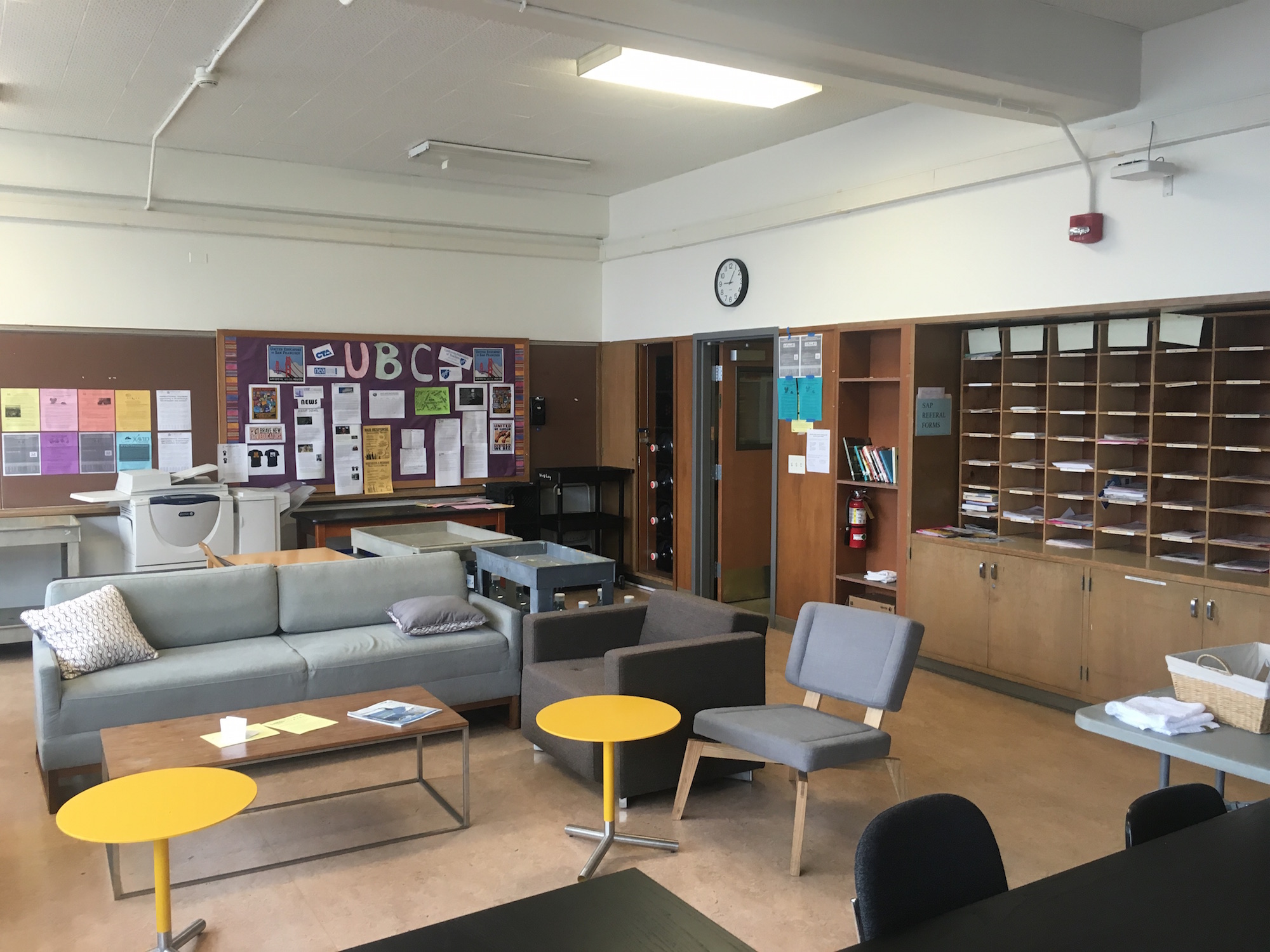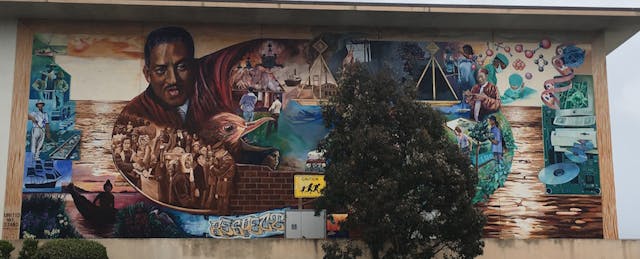At 9:25 a.m. on Friday, March 4, Marthaa Torres joined Anderson (his first name), a sophomore at Thurgood Marshall Academic High School in San Francisco, for his College & Career class. She’s not his classmate, though; she’s his principal.
Ms. Torres wasn’t there just to learn about Anderson’s day but to see whether the English language learner is engaged in his coursework, “I’m worried he hasn’t been challenged enough. I want to see if that’s true firsthand,” she said.
Torres and I sat in Anderson’s class as a part of the Shadow a Student Challenge, an initiative from IDEO, the Stanford d.School and the Hewlett Foundation that hopes to foster empathy between administrators and students. It’s the first part of a larger suite of programs, School Retool, aimed at redesigning many traditional, entrenched school processes.
The goal, according to Susie Wise, Director of the Stanford d.School's K12 Lab Network, is for principals to understand their students’ lived realities, develop empathy for them and start on the path towards change. As administrators, principals tend to be removed from the day-to-day operations behind teaching and learning. What better way to relearn the highs and lows of being a teenage student than to accompany them for classes and lunch?
“Principals have told us that they’re seeking rich professional development experiences,” Wise said, “and there’s not much in that space. Shadowing a student is low-hanging fruit that can inspire empathy and immediate action. Principals have all the levers of design at their disposal. They control the infrastructure. We are looking for the experience can quickly encourage them to act.”
Torres is in the thick of her fifth year as principal of Thurgood Marshall. She loves it. She’s also worked as a math teacher and an assistant principal. She enjoys being in the shoes of her students. I noticed she didn’t discipline anyone all day, and her students didn’t seem to cower from her in the halls.
Four hundred and fifty students attend Thurgood Marshall. It’s a majority Latino school—Spanish is ubiquitous in the hallways and sometimes serves as the language of instruction—and the greater part of the student body qualifies for free reduced-price lunch. Half of the student body is learning English, with more than three quarters of those learners having immigrated to the USA in the past two years.
Anderson’s first language is Spanish; he’s lived in the States for three years. For the better part of the day, he was playing with a polyhedral Rubik’s Cube. It looked impossible to me. He dislikes math class and when teachers haven’t arrived or started class by the second bell. The latter is his least favorite part of any day.

In His Shoes
Classes started at 9:30 a.m. Because of teacher professional development in the early morning, Thurgood Marshall begins the day later on Fridays, and classes are shortened. In Anderson’s College and Career class, the students watched a TED Talk on succeeding in college engineering classes. They were halfway engaged. Many were late and slumped into their chairs. A few Spanish-speakers, Anderson included, valiantly struggled to understand the video’s English and complete the worksheet in English. The Chinese students said the translation of their worksheet was mediocre; the instructions were clear, but the questions didn’t make sense.
At 10:10 a.m., we walked into the gym for Physical Education: Basketball, badminton without a net, and soccer. I learned that I am out of shape. Torres said she had forgotten how much energy students have. She noticed that none of the girls in the class were participating and made a note of it.
10:50: Supplementary English class. Because Anderson is an English language learner, he’s enrolled in the Supplementary English class as well as traditional English language arts. The class was learning how to use the phrase “as a result” to attach cause phrases to their effects. An example from the teacher: “Connect ‘I studied very hard’ to ‘I earned good grades’ using ‘as a result.’” Anderson, working in a group of four, raised his hand a few times to share his group’s answer: “I studied very hard so I earned good grades.” That wasn't the right answer. After two unsuccessful attempts to be called on—“I like to share my ideas,” he said—he answered incorrectly. The teacher told the four to use “as a result,” as she originally instructed. "So" didn't count. His group didn’t bother to right the wrong sentence before the next one came up on the Smartboard.
He went back to playing with his Rubik’s Cube—which caught the teacher’s attention. She walked up and asked him, “Is that distracting you?”
“No, ma’am.”
She gave him a look that said, “If you say so,” and returned to attempting to corral two loudmouth boys.
Torres disagreed with the teacher’s reprimand. “I teared up a little when Anderson’s English teacher called him out for playing with the Rubik’s Cube,” she said later. “She considered it a negative thing, but he’s trying to challenge himself. It’s sad that a kid has to create his own task that interests him. The material is below his ability, so he wasn’t engaged. He has to distract himself from the boredom of not being challenged.” She confessed to being a little bored, too.
Another student in Anderson’s group caught Torres’ eye for the same reason. “A bright, high-achieving student who isn’t engaged by her class,” Torres said. “She’s lost a lot of spirit since I did this a year ago.”
Torres participated in Shadow a Student Day in 2015, when the initiative was a small pilot. Her “hack”—a short-term improvement initiative—involved upping teachers’ skills for working with students in groups. Her goal, she said, was to leverage the expertise of students. She wanted students to share and grow their wealth of knowledge through interactions with each other.
That grand idea didn’t play out in this English class. She had seen Anderson’s group fall apart when they didn’t find the material interesting. Other groups could not write a right answer. Torres did, however, concoct an idea for next year: How to make use of the heterogeneity of the group. It seemed to her that the advanced students were clumping together, as were the lagging ones. She wanted to teach teachers to mix them.
11:30 a.m.: Anderson asked us not to accompany him during his lunch, so we ate pasta, oranges, carrots and drank miniature cartons of milk with six juniors, all six native Spanish speakers. Among them was Clara, a member of Thurgood Marshall’s student action committee who had worked with Torres before on school improvement initiatives. She was the most fluent in English at the table and therefore translated Torres’ and my questions into Spanish.
They discussed a possible new coat of paint for the school and the difficulty of classes. None of the students at the table said the material in their classes was too challenging, though a few said their limited English vocabulary turned easy classes into hard ones. One boy said he felt like he was learning the same things over in a few classes. Torres saw an opportunity and tried to excite the juniors to join AP classes next year. She wants more Pathway—Thurgood Marshall’s name for its ELL track of classes—students choosing AP classes. The juniors seemed ambivalent.
The last concern at the lunch table? One student said the bus hadn’t returned for the soccer team at their game the previous week. The bus just left them to make their own way back.
12:10 p.m.: Geometry. The group collaboration that Torres envisioned was more evident in this class. Anderson and Tiffany were discussing what questions they needed to answer to deduce the cost of repainting the school. For Torres, the key observation was that students in the groups were speaking to one another and debating—which was largely absent in the morning’s English class. Tiffany was learning new English words. Anderson was reasoning through the concept of surface area.
I left after geometry as Anderson and Ms. Torres walked to physics. They still had a few classes left in the day.

Reflections of Shadows
“I want students to engage more in the productive struggle where they’re stretched and they’re pushing themselves,” Torres said. “It’s tough. It’s always a balance: We can’t let it go on too long because they’ll get frustrated, but we can’t cut it off because they won’t learn. That’s what I ultimately hope to get out of these heterogeneous groups and teacher trainings.”
The Shadow a Student Challenge launched in 2016 to a tumultuous response: principals in all 50 states—1400 of them—vowed to shadow a student. Susie Wise, Director of the K12 Lab Network at the Stanford d.School, said this was the perfect year to do it.
“[Shadowing students] is not a new concept,” she said, “and it’s on everyone’s to-do list, but it’s always getting pushed down. Well, 2016 is a Leap Year. You have an extra day and no excuse not to do it. We gave administrators a deadline and a community of others doing the same thing.”
Principals in the Shadow a Student Challenge follow students from their own schools, which, aside from being convenient, was a conscious design choice, according to Wise. Many high-performing schools offer tours. “Principals would visit places like High Tech High [in San Diego, CA]” she said, “where people are doing important and innovative work, and say, ‘This is great,’ but it won’t work in my context.’ So we asked, ‘What can we do with someone who is just raising their hand, who wants change, so they won’t get discouraged?'"
She hopes the challenge will incorporate student voice into the directions schools take. The “hacks,” as she calls them, that arise from Shadow a Student Week are not meant to be longstanding solutions, rather ways for principals to rapidly iterate solutions to problems and, if they fail, discard them. They’re ways to experiment without fear of long-term consequences.
If principals want to engage further, they can enroll in School Retool’s professional development cohort program, where they’ll spend four months creating longer-term plans for their schools in the company of other principals. IDEO ran the curriculum and program design, the d.School is managing the cohorts of principals and the Hewlett Foundation provided the funding and the larger goals centered on its principles of “deeper learning."
By lunch, as Torres was looked forward to her hacks, she also thought of next year’s challenge. She said, “I want all my Thurgood Marshall teachers to go through it next year.”


